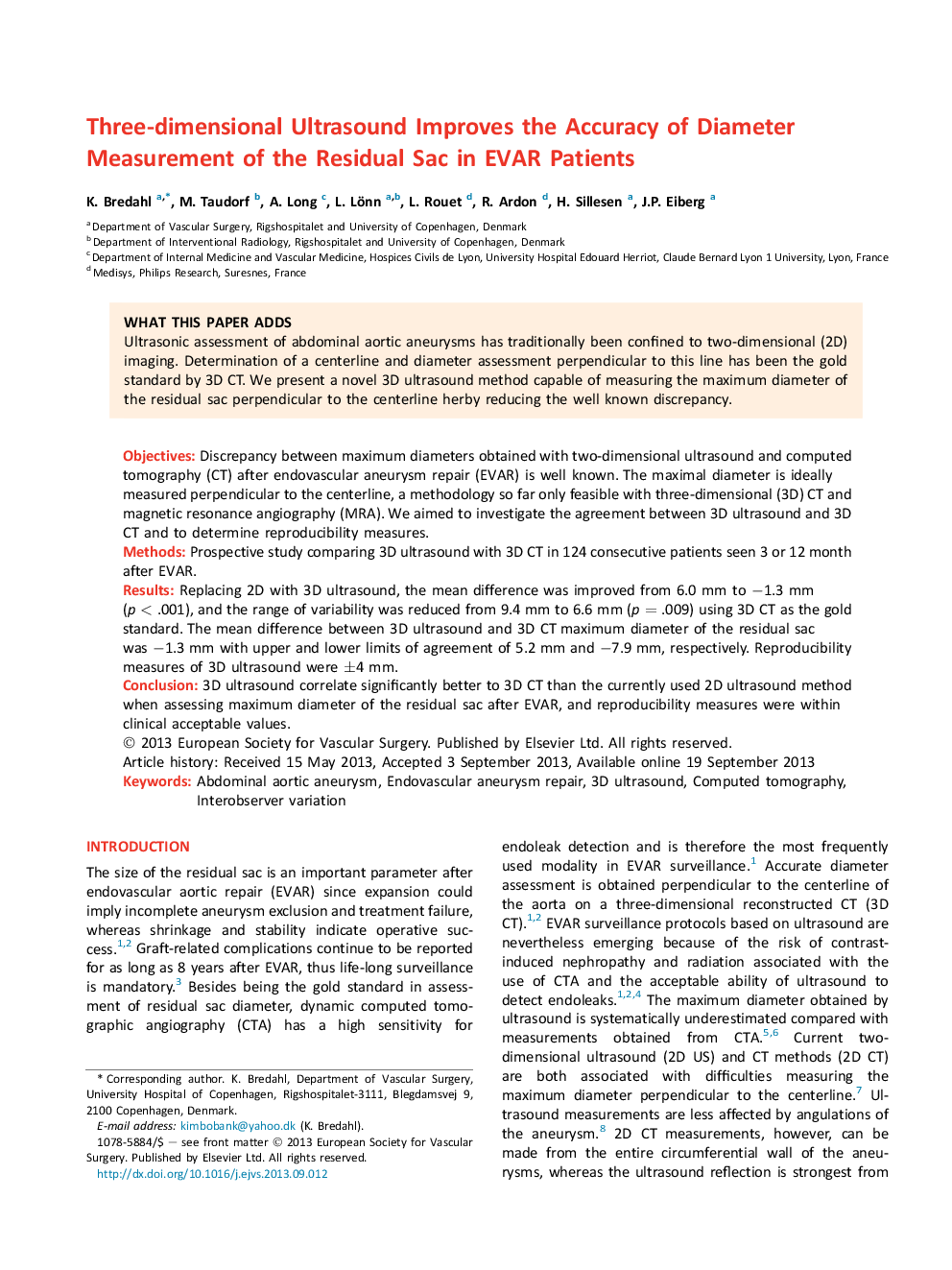| Article ID | Journal | Published Year | Pages | File Type |
|---|---|---|---|---|
| 2912184 | European Journal of Vascular and Endovascular Surgery | 2013 | 8 Pages |
ObjectivesDiscrepancy between maximum diameters obtained with two-dimensional ultrasound and computed tomography (CT) after endovascular aneurysm repair (EVAR) is well known. The maximal diameter is ideally measured perpendicular to the centerline, a methodology so far only feasible with three-dimensional (3D) CT and magnetic resonance angiography (MRA). We aimed to investigate the agreement between 3D ultrasound and 3D CT and to determine reproducibility measures.MethodsProspective study comparing 3D ultrasound with 3D CT in 124 consecutive patients seen 3 or 12 month after EVAR.ResultsReplacing 2D with 3D ultrasound, the mean difference was improved from 6.0 mm to −1.3 mm (p < .001), and the range of variability was reduced from 9.4 mm to 6.6 mm (p = .009) using 3D CT as the gold standard. The mean difference between 3D ultrasound and 3D CT maximum diameter of the residual sac was −1.3 mm with upper and lower limits of agreement of 5.2 mm and −7.9 mm, respectively. Reproducibility measures of 3D ultrasound were ±4 mm.Conclusion3D ultrasound correlate significantly better to 3D CT than the currently used 2D ultrasound method when assessing maximum diameter of the residual sac after EVAR, and reproducibility measures were within clinical acceptable values.
